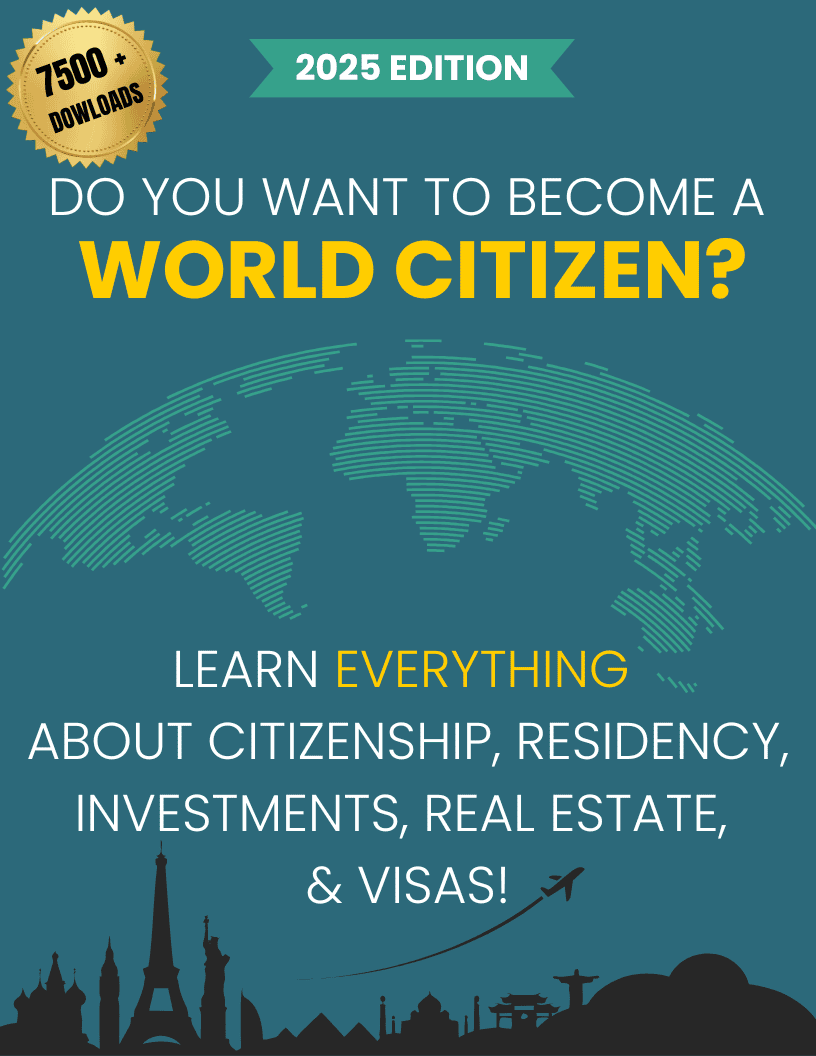EB-5 Visa Explained
Boost Your Freedom Without Compromise.
- Who offers the CHEAPEST program available.
- Who offers the BEST program available.
- What you need to qualify?

The EB-5 Immigrant Investor Program is a leading pathway for global investors seeking U.S. permanent residency. By making a qualifying investment in the American economy and creating jobs, foreign nationals and their families can secure green cards and, eventually, U.S. citizenship. This guide provides a clear, up-to-date overview of how the EB-5 visa works, who it benefits, and what you need to know to get started.
For a broader look at global investment migration, explore the WorldPassports citizenship by investment overview.
- The EB-5 program offers a direct route to U.S. permanent residency through investment and job creation.
- Minimum investment is $1,050,000, or $800,000 for projects in Targeted Employment Areas (TEAs).
- No employer sponsorship is required; investors can include their spouse and unmarried children under 21.
- Regional centers simplify the process by pooling investments and managing projects.
- Strict job creation and compliance requirements apply, making due diligence essential.
So, you’ve heard about getting US permanent residency through the EB-5 visa program and might be wondering what an EB-5 visa is.
That’s where we come in.
Welcome to this compact guide on EB-5 visas – we'll provide a solid overview of what EB-5 visas are, how they function, and the opportunities they offer for foreign investors looking to make a positive impact on the US economy.
In This Article, You Will Discover:
Let's get started on your journey to understanding the ins and outs of the EB-5 visa program…
- Who offers the CHEAPEST program available.
- Who offers the BEST program available.
- What you need to qualify?
 Free Consultation
Free Consultation Easy to Use
Easy to Use 100% Safe & Secure
100% Safe & Secure
What Is the EB-5 Visa Program and How Does It Work?
The EB-5 visa, established in 1990, is the fifth employment-based preference category for U.S. immigration. It enables foreign investors to obtain permanent residency by investing in a new commercial enterprise that creates at least 10 full-time jobs for U.S. workers.

Investment Requirements
- Standard Investment: $1,050,000 in a qualifying U.S. business.
- TEA Investment: $800,000 if the project is in a Targeted Employment Area (rural or high-unemployment area).
- Job Creation: The investment must result in at least 10 full-time jobs for U.S. workers.
- Investment Types: Investors can choose direct investment (active business management) or invest through a regional center (passive involvement).
Who Can Benefit Most from the EB-5 Visa Program?
The EB-5 program is ideal for high-net-worth individuals and families seeking U.S. permanent residency without the need for employer sponsorship or specific skills.

Benefits for Investors
- Freedom to live, work, and study anywhere in the U.S.
- Faster route to permanent residency and citizenship compared to many other visa categories.
- No sponsorship required: Investors apply independently.
- Family inclusion: Spouse and unmarried children under 21 are eligible for green cards.
- Access to U.S. education and healthcare for dependents.
Benefits for the U.S. Economy
- Stimulates economic growth by attracting foreign capital.
- Creates permanent jobs for American workers.
- Supports development in underserved areas through TEA investments.
What Is a Regional Center and Why Is It Important for EB-5 Investors?
Regional centers are USCIS-approved entities that pool funds from multiple EB-5 investors to finance large-scale projects. They play a crucial role in simplifying the investment process and increasing the likelihood of meeting job creation requirements.
Key Advantages of Regional Centers
- Passive investment: Investors are not required to manage day-to-day business operations.
- Easier job creation: Regional centers can count direct, indirect, and induced jobs, making it simpler to meet the 10-job requirement.
- Risk mitigation: The risk is shared among multiple investors and managed by experienced professionals.
- Flexible investment models: Options include loan-based and equity-based structures.
For a detailed guide, visit the EB-5 regional centers resource.
What Is a Targeted Employment Area (TEA) and Why Does It Matter?
A Targeted Employment Area (TEA) is a rural area or a region with unemployment at least 150% of the national average. Investing in a TEA allows applicants to qualify for the lower $800,000 minimum investment.
Why TEAs Matter
- Lower investment threshold: Makes the EB-5 program more accessible.
- Promotes economic development: Directs capital to areas most in need of job creation and growth.
- Increases approval chances: Many regional center projects are located in TEAs to attract investors.
Common Questions
Is the EB-5 Visa a Good Idea?
Can I Get US Residency With the EB-5 Visa?
Who’s the EB-5 Visa For?
What’s the Direct Investment EB-5 Program?
How Long Has the EB-5 Visa Been Around?
How Long Does It Take to Get an EB-5 Green Card?
In Conclusion
The EB-5 visa program offers a unique opportunity for investors to secure U.S. permanent residency through capital investment and job creation. With options for both direct and regional center investments, the program is flexible but demands careful planning and compliance. For more insights and the latest updates, visit the EB-5 visa explained hub.
Disclaimer: This article is for informational purposes only. Investment amounts and regulations are subject to change. Always consult with a qualified immigration professional before making investment decisions.
- Who offers the CHEAPEST program available.
- Who offers the BEST program available.
- What you need to qualify?
 Free Consultation
Free Consultation Easy to Use
Easy to Use 100% Safe & Secure
100% Safe & Secure







